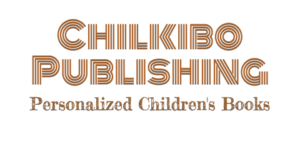When deciding whether or not to let your child watch a movie, it’s easy to look online or call the theater to get the MPA rating and know whether it’s appropriate. Even TV shows and video games come with attached ratings to let parents know what’s acceptable. However, books don’t have anything like that.
Books don’t have ratings like movies for several reasons. For one thing, the first amendment protects the freedom to publish, and adding age ratings to books is a slippery slope to censorship. Additionally, there are too many books to make rating them cost-effective.
This article will further explain why books don’t have age ratings and whether or not they should have them. Keep reading to learn more.

The Potential for Censorship
Perhaps the primary reason books don’t have an equivalent to an MPA rating is the potential for censorship.
Unlike movies and games, books and other printed media are protected under the first amendment, which states, “Congress shall make no law respecting an establishment of religion, or prohibiting the free exercise thereof; or abridging the freedom of speech, or of the press; or the right of the people peaceably to assemble, and to petition the Government for a redress of grievances.”
The essential bit is that part about the “freedom of speech, or of the press.” For good or for ill, people can say whatever they want in a book. As long as they aren’t committing libel or other illegal acts, they can also say whatever they like in magazines or newspapers.
By adding age ratings to books, we’re saying they are unfit for certain people – namely, people under a certain age. That infringes on the writer’s first amendment rights and is a risky decision.
Books Are Easy to Stop
Another reason books don’t have ratings is that they’re incredibly easy to stop reading. Indeed, you could argue that turning off a movie is just as simple as closing a book. However, movies are a visual medium. When you see the objectionable material, it’s almost too late to turn them off.
With books, you aren’t seeing anything at all. Instead, you’re reading about scenarios that usually require a build-up of some kind. You can tell when reading if there’s about to be something bloody, gory, violent, sexual, etc. You can close the book and even throw it away before you ever get to the objectionable part.
Additionally, closing a book is much easier than walking out of a packed movie theater where you might disturb others. Someone may be too embarrassed to do that. However, no one knows if you stop reading your book.
Age Ratings for Books Aren’t Cost-Effective
One of the biggest arguments publishers and authors have against ratings is that adding them to books would be expensive. Approximately 500,000 to a million books are published in the United States annually, not including self-published books, which raises the number to as high as 5 million.
Setting up a rating system for books would be a multi-step process. You’d need systems in place for all of the following steps:
- Setting up the initial rating system, including exactly how much of each objectionable category (i.e., foul language, sexuality, violence, etc.) is suitable for each age rating
- Reading the books (up to 5 million a year)
- Studying the books’ content
- Comparing the amount of objectionable content in each book against the acceptable amount at each rating stage
- Assigning a rating to each book
- Physically adding the rating to the books’ covers, online blurbs, etc.
- Dealing with appeals from authors/publishers who disagree with the rating
And those are just the fundamental categories. The whole system would cost millions, if not billions, of dollars. Furthermore, the writers and publishers wouldn’t see a monetary return on the investment. It would likely increase the cost of books for consumers, as well.
No one wants any of those extra costs.
Adding Ratings to Books Would Require Rearranging the Entire System
In addition to not being cost-effective for publishers and writers, it would also cause issues for bookstores, libraries, and other retailers and places where people go to find books. Sellers and library staff would have to implement new training and policies to learn to deal with the rating system.
It would limit who could check out or purchase certain books and change how they were marketed, displayed, etc. This particular point is also cyclical because once the library stops checking out certain books to people, the first amendment comes back into play.
There Are Alternate Means for Checking Books’ Appropriateness
As you can see, it would be a massive, expensive hassle to implement a rating system for books now, especially since everyone would be starting entirely from scratch.
Furthermore, it would be a massive, expensive hassle for something that isn’t needed. There are already plenty of ways to check whether or not a book is appropriate for specific age groups. The easiest way is to read the book yourself. Barring that, though, you simply need to ask.
Bibliophiles, booksellers, and librarians are usually pretty knowledgeable about books. They’re also great at research, so they can easily find out what they don’t know. You can ask them, “Hey, would Lord of the Rings be okay for my 12-year-old son?” They’ll tell you the truth. They’ll let you know about the book’s plot and characters and its difficulty level.
Reading customer reviews is another excellent way to see whether or not a book is okay for your kids. And there are several websites, such as Common Sense Media, dedicated to giving parents accurate information about what is and isn’t okay for their children.
Why invest millions or billions of dollars into creating a rating system for books when there are already so many simple ways to rate them?
It Could Backfire
Finally, adding age ratings to books could backfire, especially if the age ratings are just suggestions and can’t be enforced. After all, having an ‘M’ for ‘mature’ stamped on a book’s cover makes it very easy for kids to find books their parents might not want them to read.
That’s not to say they won’t find the racy stuff anyway. However, there’s no reason to make it easier for them.
So, Should Books Have Age Ratings?
Some people may disagree with me on this point, but no, I don’t think so.
Books shouldn’t have age ratings because they don’t need them. There are plenty of other ways to assess whether or not a book is appropriate, and implementing a new age rating system would be a colossal undertaking of both time and money.
Leaving it up to the parents has worked for hundreds of years, and there’s no reason to rock the boat.
Final Thoughts
Books don’t have ratings like movies for several reasons, but the most obvious is that they don’t need them. Plenty of websites are available to check the appropriateness of books, and adding ratings is a slippery slope toward stepping on people’s first amendment rights.


